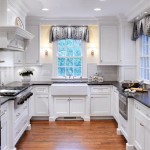Elevating Your Living Space: Comprehensive Home Decoration Tips
Home decoration is more than arranging furniture and choosing paint colors. It's an art form, a science of space optimization, and a reflection of individual personality. A well-decorated home is not only aesthetically pleasing but also functional and comfortable, fostering a sense of well-being for its inhabitants. This article provides a comprehensive overview of essential home decoration tips to guide individuals in creating a harmonious and inviting living environment.
Strategic Space Planning: The Foundation of Effective Decoration
Before embarking on any decorating project, a thorough assessment of the existing space is crucial. This involves analyzing the room's dimensions, natural light sources, existing architectural features, and intended function. Understanding these elements will inform the layout and design choices, ensuring a cohesive and purposeful outcome.
Consider the flow of traffic within the room. Furniture placement should facilitate easy movement and prevent bottlenecks. Avoid overcrowding by prioritizing essential pieces and minimizing unnecessary additions. Utilize scaled floor plans or digital design tools to visualize different furniture arrangements before committing to a physical setup.
Natural light is a valuable asset. Position furniture to maximize its benefits. Light-colored walls and reflective surfaces can amplify natural light, making the room feel larger and brighter. Conversely, darker shades can create a sense of intimacy and warmth in spaces with abundant natural light.
Architectural features, such as fireplaces, windows, and built-in shelving, should be incorporated into the design. These elements can serve as focal points and define the room's character. Avoid obstructing these features with furniture or decor that detracts from their inherent appeal.
Finally, the room's intended function should dictate its design. A living room, for example, may prioritize comfortable seating and conversation areas, while a home office requires a functional workspace and ample storage. Designing with purpose ensures that the space effectively serves its intended use.
The Power of Color: Creating Mood and Harmony
Color plays a pivotal role in shaping the overall ambiance of a room. It evokes emotions, influences perceived size, and complements architectural elements. Careful consideration of color palettes is essential for achieving a desired aesthetic and creating a harmonious living environment.
Begin by selecting a dominant color that reflects personal preferences and complements the room's function. Neutral hues, such as beige, gray, and white, provide a versatile backdrop that allows for flexibility in incorporating accent colors and decorative elements. Bold colors can be used strategically to create visual interest and highlight specific features.
Consider the psychological effects of different colors. Blue is often associated with tranquility and serenity, making it suitable for bedrooms and bathrooms. Yellow evokes feelings of optimism and energy, making it a good choice for kitchens and living rooms. Red is a stimulating color that can add drama and warmth, but should be used sparingly in large areas.
The color wheel is a valuable tool for understanding color relationships and creating harmonious palettes. Complementary colors, such as blue and orange, create a vibrant contrast. Analogous colors, such as blue, green, and turquoise, offer a calming and cohesive effect. Monochromatic palettes, which utilize varying shades of a single color, create a sophisticated and unified look.
Paint finishes also influence the appearance of color. Matte finishes absorb light and create a soft, velvety texture, while glossy finishes reflect light and add a touch of glamour. Choose the appropriate finish based on the room's lighting conditions and desired aesthetic.
Don't limit color choices to walls. Incorporate color through furniture, accessories, and textiles. Area rugs, throw pillows, and artwork can add pops of color and personality without requiring a permanent commitment.
Accessorizing with Intention: Adding Personality and Finishing Touches
Accessories are the finishing touches that transform a house into a home. They add personality, reflect individual interests, and elevate the overall design. Thoughtful selection and placement of accessories are crucial for creating a cohesive and visually appealing space.
Begin by curating a collection of items that hold personal significance. These may include family heirlooms, travel souvenirs, artwork, or objects that simply bring joy. Displaying these items with intention adds character and creates a connection to the inhabitants.
Consider the scale and proportion of accessories in relation to the surrounding furniture and space. Oversized accessories can overwhelm a small room, while undersized accessories may get lost in a large space. Experiment with different arrangements to find the optimal balance.
Vary the textures and materials of accessories to add depth and visual interest. Combine soft textiles, such as throws and pillows, with hard surfaces, such as glass and metal. Incorporate natural elements, such as plants and wood, to create a sense of organic warmth.
Layering accessories can create a dynamic and visually rich display. Group items of varying heights and shapes together to create a sense of depth and dimension. Arrange books, candles, and decorative objects on shelves and coffee tables to add personality and visual interest.
Pay attention to lighting when accessorizing. Strategically placed lamps and accent lighting can highlight specific accessories and create a warm and inviting ambiance. Use lighting to draw attention to artwork, sculptures, and other focal points.
Don't be afraid to edit and rearrange accessories periodically. Rotating items and experimenting with different arrangements can keep the space feeling fresh and dynamic. This allows for ongoing personal expression and adaptation to changing tastes.
The Importance of Lighting: Illuminating Style and Functionality
Lighting is an indispensable element of home decoration, impacting both the aesthetic appeal and functionality of a space. It transcends mere illumination, influencing mood, accentuating architectural features, and enhancing the overall ambiance of a room. A well-designed lighting scheme incorporates various light sources and controls to cater to diverse needs and preferences.
Begin by understanding the three primary types of lighting: ambient, task, and accent. Ambient lighting, also known as general lighting, provides overall illumination for the room. Task lighting focuses on specific areas for activities such as reading or cooking. Accent lighting highlights architectural features, artwork, or decorative elements.
Layering these three types of lighting is essential for creating a balanced and functional lighting scheme. Ambient lighting provides a foundation of illumination, while task lighting addresses specific needs. Accent lighting adds visual interest and drama, enhancing the overall aesthetic.
Consider the color temperature of light bulbs. Warm light, with a color temperature of around 2700K, creates a cozy and inviting atmosphere. Cool light, with a color temperature of around 5000K, is brighter and more energizing, making it suitable for task lighting and workspaces.
Utilize dimmers to control the intensity of lighting. Dimmers allow for adjusting the brightness to suit different activities and moods, conserving energy and extending the lifespan of light bulbs. They also enable the creation of different lighting scenes for various occasions.
Choose light fixtures that complement the room's style and décor. Chandeliers, pendants, and sconces can add a touch of elegance and sophistication, while recessed lighting and track lighting offer a more contemporary and minimalist aesthetic. Consider the size and scale of the fixtures in relation to the surrounding space.
Natural light should be maximized whenever possible. Keep windows clean and unobstructed to allow sunlight to flood the room. Utilize sheer curtains or blinds to filter light and reduce glare. Mirrors can also be strategically placed to reflect natural light and brighten the space.
Outdoor lighting is equally important for enhancing curb appeal and creating a welcoming atmosphere. Install pathway lighting to guide visitors to the entrance, and highlight architectural features with spotlights or floodlights. Consider using timers or motion sensors to automate outdoor lighting and conserve energy.
Textiles and Fabrics: Enhancing Comfort and Visual Appeal
Textiles and fabrics are integral to home decoration, significantly contributing to the comfort, visual appeal, and overall ambiance of a living space. They encompass a broad range of materials, including upholstery, curtains, rugs, and bedding, offering opportunities to introduce color, texture, and pattern into a room.
When selecting textiles, consider the room's function and the desired aesthetic. Durable and stain-resistant fabrics are ideal for high-traffic areas, while luxurious and delicate fabrics may be more suitable for bedrooms and formal living spaces. Choose fabrics that complement the existing color palette and décor.
Upholstery plays a crucial role in the comfort and style of furniture. Select fabrics that are both visually appealing and durable, considering factors such as durability, stain resistance, and ease of cleaning. Consider the texture and pattern of the fabric in relation to the overall design scheme.
Curtains and drapes serve both functional and decorative purposes. They provide privacy, filter light, and add a touch of elegance to a room. Choose fabrics that complement the wall color and furniture style. Consider the length and fullness of the curtains to achieve the desired aesthetic.
Rugs define spaces, add warmth, and provide a foundation for furniture arrangements. Choose rugs that are appropriately sized for the room and complement the existing décor. Consider the material, texture, and pattern of the rug in relation to the overall design scheme.
Bedding is essential for creating a comfortable and inviting bedroom. Select high-quality linens, blankets, and pillows that are both soft and durable. Choose colors and patterns that promote relaxation and create a sense of tranquility.
Throw pillows and blankets add pops of color, texture, and personality to sofas, chairs, and beds. Experiment with different sizes, shapes, and patterns to create a visually interesting and comfortable arrangement. Consider using seasonal colors and patterns to update the décor throughout the year.
Mixing and matching different textiles and fabrics can create a dynamic and visually rich effect. Combine solid colors with patterns, smooth textures with rough textures, and natural materials with synthetic materials. However, maintain a sense of balance and cohesion to avoid a cluttered or overwhelming look.

Home Decorating Tips Howstuffworks

These 21 Home Decor Tips Will Instantly Uplift Your S Interiors

Surprisingly Simple Home Decor Tips House

Home Decor Tips 10 Wall Decoration Ideas To Revamp Your Walls

Home Decorating Tips Interior Decoration Ideas For Decor Gharexpert Com

Upgrade Your Home Interiors With These Top Decoration Tips

8 Simple Home Decoration Tips To Revamp Your Living Space

These 21 Home Decor Tips Will Instantly Uplift Your S Interiors

7 Easy To Follow Home Decor Ideas For Festive Season Lifestyle News Tv

Six Home Decoration Tips For Newlyweds Archify Malaysia
Related Posts







